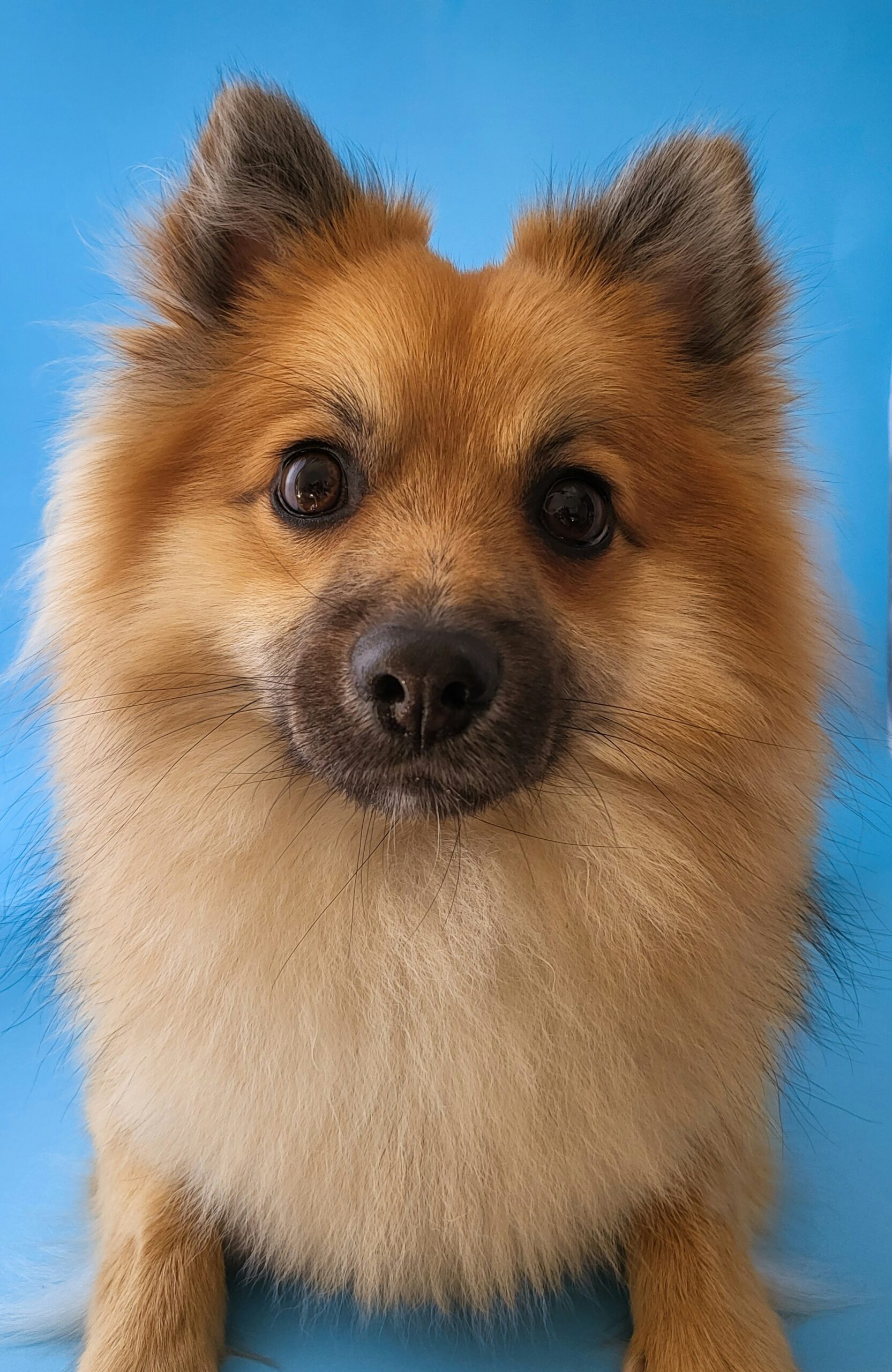Meet the spitz dog, a fluffy bundle of personality with a knack for turning heads and stealing hearts. With their charming looks and lively antics, these dogs are more than just a pretty face; they boast fascinating traits and quirky temperaments that make them unique. So, whether you’re a seasoned dog parent or a curious canine enthusiast, jump in! Discover all the ins and outs of understanding this remarkable breed, from grooming tips to diet and bonding strategies—everything you need to ensure your spitz dog thrives in your home.
Overview of Spitz Dogs
The spitz dog is not just a pretty face; it’s a bundle of personality wrapped in a fluffy coat! Known for their fox-like appearance and bushy tails curled over their backs, spitz dogs come in various shapes and sizes, but they all share some charming traits. Let’s break down what makes these pups stand out:
- Origin: These dogs hail from cold climates, designed by nature to withstand harsh winters.
- Temperament: They’re often cheerful, intelligent, and lively. Expect them to be the life of the party!
- Loyal Companions: Spitz dogs form strong bonds with their families and are known to be quite protective, making them excellent watchdogs.
Here’s a little comparison—while both the Siberian Husky and the Pomeranian are sprightly, the Husky may enjoy a run around the block, while the Pomeranian prefers a cozy lap to snuggle on.
Overall, the spitz dog category is a delightful mix, inviting everyone to enjoy their spirited charm and affectionate nature. It’s hard to resist a spitz!
Common Spitz Breeds
When it comes to spitz dogs, the variety is as rich as a gourmet dessert buffet. These furry friends come in various shapes and sizes, each flaunting their unique charm. Let’s spotlight some of the most popular spitz breeds:
- Siberian Husky: Known for their striking blue or multicolored eyes, these spitz dogs are the ultimate adventure lovers. They thrive in chilly weather and require plenty of exercise.
- Alaskan Malamute: Larger than the Siberian Husky, these muscle-bound spitz dogs excel in strength and stamina. Their friendly nature makes them great family pets.
- Pomeranian: The “fluff balls” of the spitz family! Small in size but big in personality, they are adorable companions full of energy and mischief.
- Shiba Inu: With an independent spirit, this Japanese spitz dog boasts a fox-like appearance. They’re smart, loyal, and slightly sassy!
- German Spitz: Variety within this breed includes the Klein and Mittel. These spitz dogs have a lively disposition, making them excellent playmates.
With their delightful quirks and varying characteristics, spitz dogs truly make for splendid companions. Which one will steal your heart?
Physical Traits of Spitz Dogs
When it comes to the world of doggos, the spitz dog certainly makes a statement! These fluffy wonders boast a distinct appearance that turns heads everywhere they go. Here’s what makes them stand out:
- Ears: Perky and triangular, their ears are a signature trait. They often resemble little radar dishes, always on the lookout for fun.
- Coat: Ah, the glory of the double coat! Soft underfur keeps them warm, while the longer outer layer gives them a majestic look. Expect a variety of colors from white to black and everything in between.
- Tail: Curled and typically plumed, their tails often dance over their backs as if waving hello to the world.
| Trait | Description |
|---|---|
| Size | Small to medium (varies by breed) |
| Weight | Ranges from 15 to 50 pounds |
| Lifespan | 12 to 16 years |
With those fluffy features and spirited personalities, who could resist a spitz dog? Be prepared for lots of love, cuddles, and, of course, some serious grooming sessions!
Temperament and Behavior
When it comes to personality, the spitz dog is like a delightful mix of cuddly and quirky. Here’s what to expect:
- Loyal Companions: These dogs adore their families and will often form a close bond with their humans.
- Alert and Protective: Spitz dogs are naturally suspicious of strangers; they’ll sound the alarm if someone unusual wanders too close.
- Playful Spirits: With a zest for life, they enjoy playtime and can keep you entertained for hours.
Comparison of Spitz Temperament
| Trait | Pomeranian | Siberian Husky | American Eskimo |
|---|---|---|---|
| Loyalty | High | Moderate | High |
| Trainability | Moderate | High | High |
| Energy Level | Moderate | Very High | Moderate |
Overall, each spitz dog breed showcases unique quirks while retaining common traits—making them a joy to own. So as you embark on your journey with a spitz dog, be prepared for a delightful mix of affection, mischief, and boundless energy!
Training and Socialization Tips
Training a spitz dog can be a delightful yet challenging endeavor! These furballs often come packed with personality and intelligence, which makes them eager learners but can also lead to independent thinking. To ensure a well-behaved companion, consider these tips:
- Start Early: Begin training as soon as you bring your spitz dog home. Early socialization helps them become adaptable adults.
- Use Positive Reinforcement: Praise, treats, and playtime will work wonders. Who can resist a treat when they’ve nailed that sit command?
- Keep it Fun: Mix up training sessions with games. A spitz dog thrives on variety; otherwise, they might just decide to take a nap instead!
- Consistency is Key: Establish clear commands and stick to them. Confusion leads to frustration for both you and your spitz dog.
- Socialize, Socialize, Socialize: Exposure to different people, pets, and environments builds confidence. Schedule puppy playdates or enroll in obedience classes.
With a balanced approach, your spitz dog will transform into an affectionate and well-mannered companion! Happy training!
Health Considerations for Spitz Dogs
When it comes to keeping your spitz dog as happy and healthy as a pup can be, it’s essential to focus on a few key health considerations. After all, a healthy spitz dog leads to a happy life!
Here’s a quick checklist to keep your spitz in tip-top shape:
- Regular Vet Visits: Schedule annual check-ups to catch potential problems early.
- Watch for Common Ailments: Spitz breeds often face issues like hip dysplasia, eye conditions, and skin allergies. Stay informed!
- Vaccinations: Keep those shots up to date to protect against diseases.
- Dental Care: Don’t forget about your spitz dog’s pearly whites! Regular brushing and vet-checks are crucial.
- Weight Management: Obesity can lead to serious health problems. Monitor your spitz dog’s diet and keep them active.
In conclusion, keep an eye on these health aspects, and you’ll not only ensure your spitz dog lives a longer, healthier life but also keep them wagging their tail with joy! A happy spitz dog is truly a sight to behold!
Grooming and Maintenance
When it comes to grooming your spitz dog, think of it as a delightful bonding session—it’s just you, some brushes, and a fluffy bundle of joy! Here are some grooming tips to keep your spitz looking sharp:
- Brushing: Aim for 2-3 times a week to prevent matting. The thick double coat of spitz dogs loves a good brushing!
- Bathing: Bathe your spitz dog every 4-6 weeks. Over-bathing can strip their coat of natural oils and create a frizzy fuzz-ball!
- Nail Trimming: Keep those lively paws in check! Trim nails every 3-4 weeks to prevent a tap-dancing calamity.
- Ear Cleaning: Check and clean ears weekly. Spitz dogs can be prone to ear infections, so keep them dry and debris-free.
| Grooming Task | Frequency |
|---|---|
| Brushing | 2-3 times a week |
| Bathing | Every 4-6 weeks |
| Nail Trimming | Every 3-4 weeks |
| Ear Cleaning | Weekly |
Remember, consistent grooming isn’t just about looking fabulous; it’s a key part of your spitz dog’s health! So grab those brushes, let the fluff fly, and enjoy the time spent together.
Exercise Requirements
When it comes to fostering that goofy, fluffy personality of the spitz dog, exercise is your best friend! These energetic furballs demand plenty of physical activity to keep their spirits high and their tails wagging. Here’s how to keep your spitz dog fit and fabulous:
- Daily Walks: Aim for at least 30-60 minutes of brisk walking each day. Mix it up with different routes to keep things exciting!
- Playtime: Engage in fetch, tug-of-war, or set up a mini agility course in your backyard for that extra flair.
- Mental Stimulation: Don’t forget their brains! Puzzle toys and training sessions can keep their minds sharp while you’re perfecting those sit and stay commands.
Quick Comparison of Exercise Needs
| Breed | Daily Exercise (Minutes) |
|---|---|
| Siberian Husky | 60-120 |
| Samoyed | 60-90 |
| Pomeranian | 30-60 |
| American Eskimo Dog | 30-60 |
By committing to a consistent exercise routine, you’ll ensure your spitz dog remains healthy and happy, ready to tackle whatever shenanigans come their way!
Building a Strong Bond with Your Spitz
Creating a strong bond with your spitz dog is a delightful journey, and it’s not limited to cuddles and treats! Here’s how you can forge a tail-wagging relationship built on trust and companionship:
- Quality Time: Spend time doing what your spitz loves! Whether it’s playing fetch or enjoying walks, your engagement shows them they matter.
- Positive Reinforcement: Praise and treats go a long way. Use them liberally when your spitz exhibits good behavior. A little “Good dog!” can spark joy!
- Training Together: Incorporating training sessions into your routine strengthens the bond. Not only does it teach commands, it also fosters teamwork.
- Create a Routine: Consistency offers your spitz a sense of stability. Regular feeding, exercise, and playtimes help them feel secure and understood.
In short, bonding with your spitz dog hinges on love, patience, and a sprinkle of fun. Always remember, a happy spitz dog means a happy you!
Building a Strong Bond with Your Spitz
Creating a strong bond with your spitz dog is like unleashing a superpower for both of you! Here’s how to make that connection flourish:
- Spend Quality Time Together: Engage in activities that both you and your spitz dog enjoy. Whether it’s a brisk walk or a cozy evening on the couch, every moment counts!
- Positive Reinforcement: Use treats and praises to reward good behavior. This method will not only create trust but also foster a cooperative spirit.
- Training as Bonding Time: Incorporate training into your routine. Spitz dogs thrive on learning, and a fun 15-minute session can strengthen your bond immensely.
- Playtime is Essential: Remember that these furry friends have a playful side. Fetch, tug-of-war, or puzzle toys keep them entertained and enhance your relationship.
- Create a Routine: Stability breeds security. By sticking to consistent feeding, walking, and play schedules, you’ll help your spitz dog feel more at home.
By investing time and effort in building a connection, you’ll see your spitz dog transform into a loyal friend and companion! So, grab those treats and gear up for some bonding fun!
Frequently Asked Questions
What are the key traits of a Spitz dog?
Ah, the Spitz dog! These fluffy bundles of joy aren’t just cute; they come with a whole toolbox of traits! Known for their thick, double coats that range from white to brown, they also boast a bushy tail that curls over their back like a proud banner. They’re alert, intelligent, and often independent thinkers, which can lead to some delightful antics. Just be sure you’re ready for a dog that’s a bit vocal and has a penchant for show-stopping drama on the doggy stage!
What is the general temperament of Spitz dogs?
Buckle up, because the temperament of a Spitz dog can be as delightful as a surprise party! These pooches are generally friendly, loyal, and full of energy—great for family fun! However, they can be a tad aloof with strangers, so don’t be surprised if they give the neighbor a suspicious side-eye. Socialization is key! And while they play hard, they’re also pretty smart, which can make training both a joy and a challenge resembling a captivating puzzle!
What kind of care do Spitz dogs require?
Caring for a Spitz dog is like managing a high-maintenance celebrity! First off, those glorious coats require regular grooming—think of it as their daily spa treatment. They shed, so brace yourself for the occasional fur blizzard in your living room! Additionally, routine exercise is non-negotiable to keep them from channeling their inner tornado. Finally, remember that mental stimulation is crucial; keep those sharp minds engaged with games and puzzles or face the consequences of a bored pup wreaking havoc!
Are Spitz dogs good with kids and other pets?
Oh, the age-old question of playdates with your pooch! Generally, Spitz dogs can be fantastic companions for kids, provided the kids are respectful and understand the boundaries—no tugging on the fluff! When it comes to other pets, it’s a mixed bag; some Spitz dogs may embody the role of the host at a friendly pet party, while others might be a tad territorial. Early socialization and proper introductions can turn potential frenemy situations into cuddly alliances!



